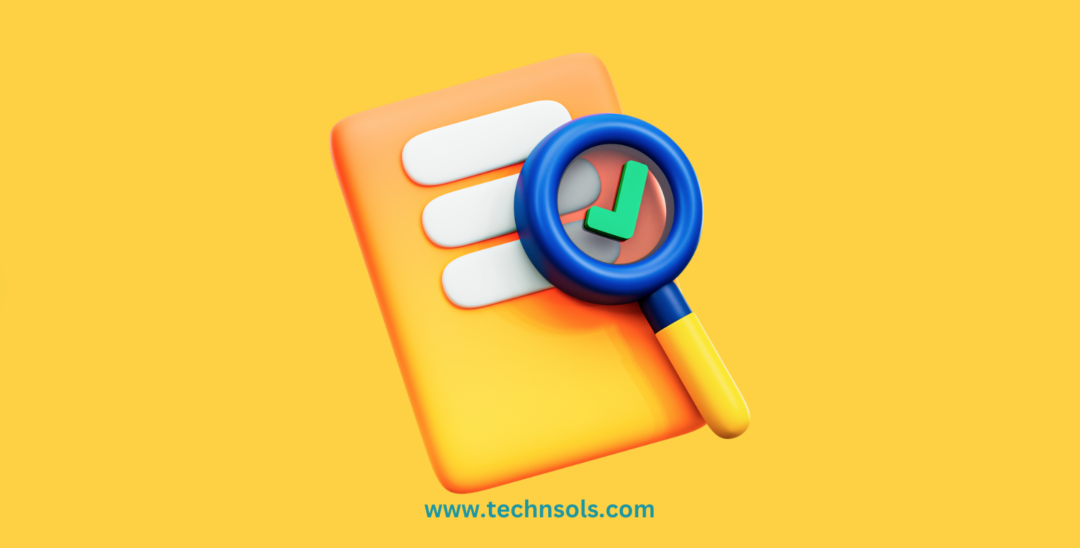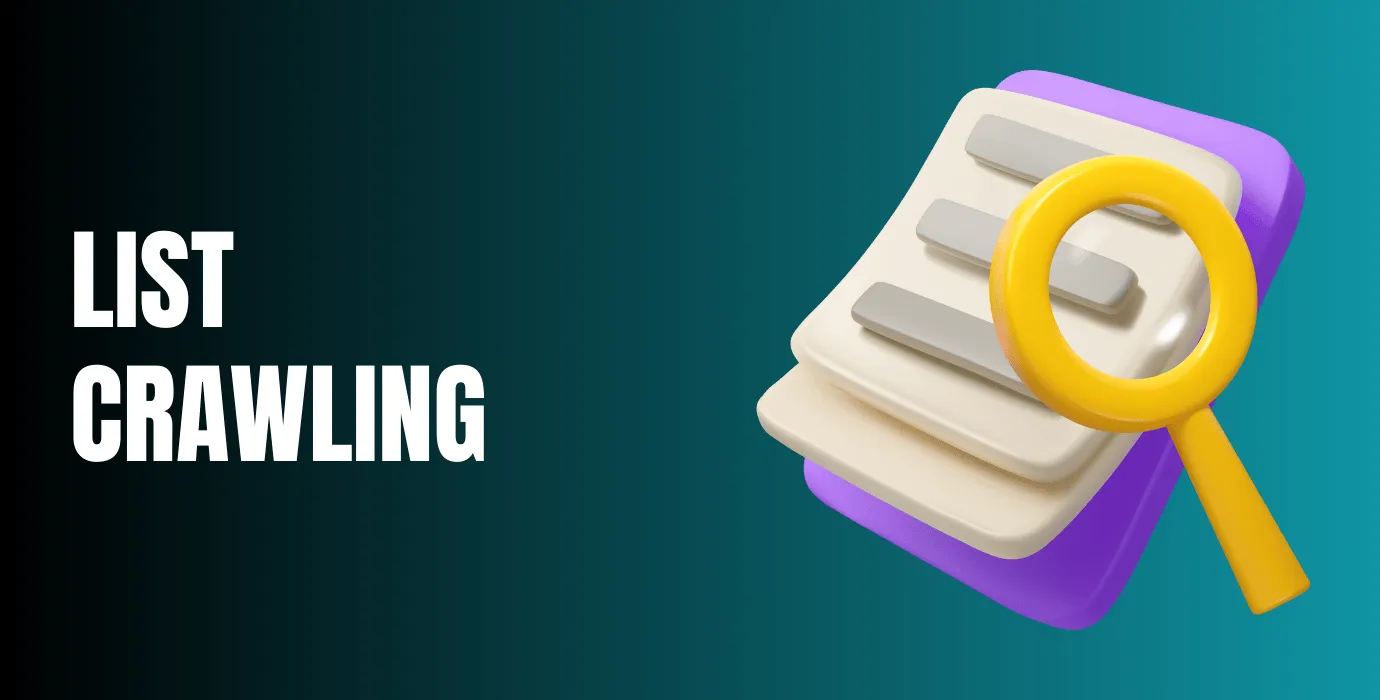List Crawling is the process of crawling through a predefined list of URLs or data points to gather structured data for analysis or presentation. It is an integral part of the process of web scraping and SEO, where bots or crawlers automatically scan through the web, search for specific content, and compile the necessary data. This process is typically automated using scripts or bots that follow the list of URLs provided and extract relevant data in a systematic way.
In SEO, Lists Crawling can help you gather key insights such as competitor information, backlinks, site performance, or keyword rankings. This helps digital marketers create more informed strategies based on actionable insights.
How List Crawling Works

The List Crawling process typically involves the following steps:
Preparing the List
The first step in Lists Crawling is creating a list of URLs or data points that you want the crawler to visit. This list can include any number of web pages, product listings, or other data sources.
Crawling the List
The crawler begins by visiting each URL on the list. It sends a request to the server hosting the URL and retrieves the HTML content of the page.
Data Extraction
Once the data is retrieved, the crawler parses the HTML and extracts the relevant information, such as text, images, videos, links, or other content specified in the list.
Storing Data
After extracting the data, it is stored in a structured format such as CSV, JSON, or directly into a database for further processing.
Analysis or Action
The extracted data can now be analyzed to uncover valuable insights, or it can be used to automate actions like updating content, improving SEO rankings, or generating reports.
Pros And Cons of List Crawling
When to Use List Crawling?
List Crawling is an ideal solution in situations where you need to collect data from specific and structured sources regularly.
Use Lists Crawling when:
Best Practices for List Crawling

To get the most out of Lists Crawling, it’s essential to follow several best practices that ensure efficiency, accuracy, and compliance with ethical guidelines. These best practices will help you avoid common pitfalls, optimize your List Crawl efforts. And achieve better results in your data collection process.
Respect Robots.txt
Before starting any List Crawling project, it’s important to check the website’s robots.txt file. This file outlines which parts of the site are allowed to be crawled and which parts are restricted. Ignoring these rules could lead to legal complications and might cause your List Crawl to be blocked.
By respecting these guidelines, you ensure that your crawling activities are ethical and compliant with the site’s terms of service. Adhering to the robots.txt file prevents you from scraping prohibited content and ensures that your Lists Crawling process remains within legal boundaries.
Use Rate Limiting
One of the most important practices in List Crawling is the use of rate limiting. Websites can be overwhelmed by too many requests in a short period, which could result in server crashes or your List Crawl being blocked. To prevent this, you should limit the number of requests your crawler sends to a server within a specific time frame.
Implementing rate limiting ensures that your List Crawl doesn’t flood the target website with excessive traffic, thus reducing the likelihood of being flagged as a bot. By regulating the request frequency, you maintain a respectful relationship with the website and increase the chances of successful data collection.
Monitor Your Crawlers
Regularly monitoring your List Crawling process is essential for ensuring that the data being collected is accurate, up-to-date, and useful. By tracking the performance and progress of your List Crawl, you can identify issues such as missing or incorrect data, failures in the crawling process, or performance bottlenecks.
Monitoring your crawlers ensures that the List Crawling process is working efficiently and collecting high-quality data. This practice helps you make adjustments to your crawler’s configuration and guarantees that your List Crawl delivers the most relevant information, keeping your data accurate and actionable.
Focus on Quality, Not Quantity
When performing List Crawling, it’s easy to focus on collecting as much data as possible. However, it’s important to prioritize quality over quantity. Instead of crawling a large number of URLs indiscriminately, focus on the most valuable and relevant data sources. This will ensure that your List Crawl results in high-quality data that is useful for your specific goals.
Prioritizing quality helps you to extract meaningful information from carefully selected websites. Also leading to better insights, improved decision-making, and more effective use of your resources. By filtering out irrelevant or low-value URLs, you ensure that your List Crawling is focused and efficient.
Filter Duplicate Data
During the List Crawling process, it’s common to encounter duplicate data. This redundancy can waste storage space and complicate data analysis. To ensure your List Crawl remains efficient, it’s important to implement strategies that detect and remove duplicate data. This can be done either during the crawling process or after the data has been collected.
List Crawling vs. Web Scraping

List Crawling is often confused with web scraping, but there are key differences:
-
List Crawling is focused on crawling a pre-defined list of URLs, whereas web scraping involves extracting data from entire websites or multiple pages without a specific list.
-
List Crawling helps more control over which pages are crawled. While web scraping is more versatile in terms of data extraction across various sites.
-
Both methods have potential legal implications, but List Crawling usually operates within a more structured. Whereas web scraping might inadvertently breach terms of service.
Tools for List Crawling
Several tools can assist in Lists Crawling:
| Screaming Frog SEO Spider | A popular tool for crawling websites, analyzing SEO data, and extracting valuable insights. |
| Scrapy | A Python framework for building web scrapers that can handle large-scale crawling projects. |
| Octoparse | A powerful web scraping tool with a user-friendly interface and the ability to extract data from structured lists. |
| ParseHub | A tool that can handle dynamic websites, making it ideal for more complex List Crawling tasks. |
How to Implement List Crawling in Your Workflow
Implementing List Crawling into your workflow involves the following steps:
Define Your Goal
Before starting, clarify the purpose of your Lists Crawling. Whether it’s for competitor analysis, SEO auditing, defining a clear goal ensures you focus on the most relevant data. This will guide your decisions on what data to extract and how to structure your crawl.
Prepare the List
Next, create a well-organized list of URLs or data points your crawler will visit. Ensure that each URL is relevant to your objective. A structured and accurate list is crucial for successful List Crawling because it determines what data is collected.
Choose the Right Tool
Select a Lists Crawling tool that suits the scale and complexity of your project. Tools like Screaming Frog or Octoparse are user-friendly, while for larger, more customizable crawls, you may need frameworks like Scrapy or Beautiful Soup.
Set Crawling Parameters
Define the parameters of your crawl, such as which data to collect, how often to crawl, and any filters to exclude irrelevant content. Setting these parameters ensures that the List Crawl is targeted and efficient.
Monitor and Optimize
Once the crawl is running, regularly monitor its progress to ensure accuracy and efficiency. Adjust crawling settings if needed, such as rate limits or URL adjustments, to optimize data quality and reduce errors during the process.
Enhancing SEO with List Crawling

One of the primary benefits of Lists Crawling is its ability to gather valuable data that can significantly impact your SEO strategy. Here’s how Lists Crawling can help improve SEO:
How List Crawling can help improve SEO:
Advanced Techniques for List Crawling
There are several advanced techniques that can further enhance your crawling efficiency and data quality. These techniques are particularly useful when dealing with large websites, complex data structures, or dynamic content.
One advanced technique is dynamic content crawling, which involves extracting data from pages that are generated through JavaScript. Also, Many modern websites rely on JavaScript to load their content, making it difficult for traditional crawlers. Tools like Puppeteer or Selenium can simulate user interactions and helps crawlers to handle JavaScript-heavy websites.
How to Avoid Common Mistakes in List Crawling

While List Crawling can be highly beneficial, several mistakes can lead to poor results or inefficiency. Here are some common mistakes to avoid:
Common mistakes to avoid:
Frequently Asked Questions (FAQs)
Is List Crawling legal?
List Crawling is legal as long as it respects the site’s terms of service and adheres to ethical practices, such as respecting the robots.txt file.
How can I prevent my IP from being banned during crawling?
Use proxies, rate limiting, and randomize your crawl requests to avoid triggering anti-bot measures.
Can List Crawling be used for competitor analysis?
Yes, List Crawling is widely used for competitor analysis. By crawling competitors’ websites, you can gather information on their content, product listings, pricing strategies, and SEO efforts, providing you with valuable insights.
How do I ensure that my List Crawl is legal?
To ensure legality, always respect a website’s robots.txt file, which outlines the pages allowed to be crawled. Avoid scraping data from restricted areas and adhere to the website’s terms of service. This will help you stay compliant with legal guidelines.
What tools are best for List Crawling?
Popular tools for List Crawling include Screaming Frog SEO Spider, Scrapy, Octoparse, and ParseHub. The best tool depends on your project’s size, the complexity of data you need, and whether you require coding or a no-code solution.
How do I avoid my IP from being banned during crawling?
To prevent IP bans, implement rate limiting to avoid overwhelming the server, use rotating proxies to change IP addresses periodically, and spread out requests over time to mimic human browsing behavior.
How often should I perform a List Crawl?
The frequency of a List Crawl depends on the type of data you’re gathering. For competitive monitoring or SEO tracking, a weekly or monthly crawl might be enough, while real-time data collection (like price monitoring) may require more frequent crawling.
Can I filter out duplicate data during the crawl?
Yes, most List Crawling tools allow you to filter out duplicate data either during the crawl process or after the data has been collected. Using algorithms to detect duplicates can help ensure the accuracy of your results.
How do I store and process the data collected from List Crawling?
The data collected from List Crawling is usually stored in structured formats like CSV, JSON, or directly into databases. From there, you can process the data using tools like Excel, Google Sheets, or data analysis software to analyze and visualize the information.
Final Thoughts
List Crawling is an essential technique for data collection, competitive analysis, and SEO improvement. While it offers numerous benefits, such as efficiency and scalability, it also comes with challenges like legal concerns and technical issues. By following best practices and using the right tools, List Crawling can become a powerful asset in your digital marketing toolkit. If implemented correctly, it can provide valuable insights, improve your SEO performance, and help you stay ahead of your competitors.




